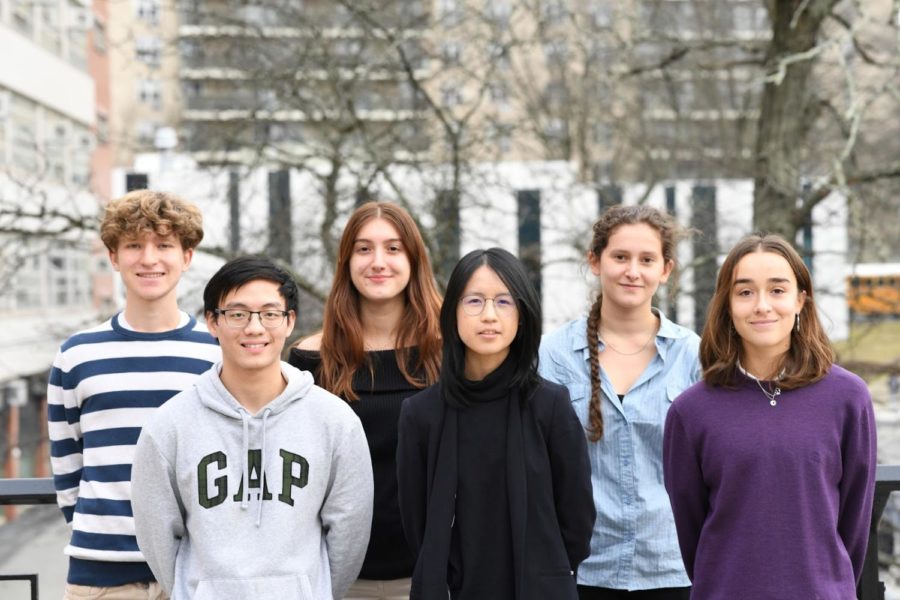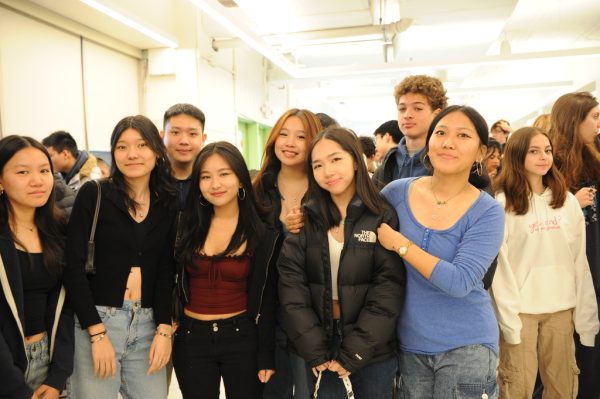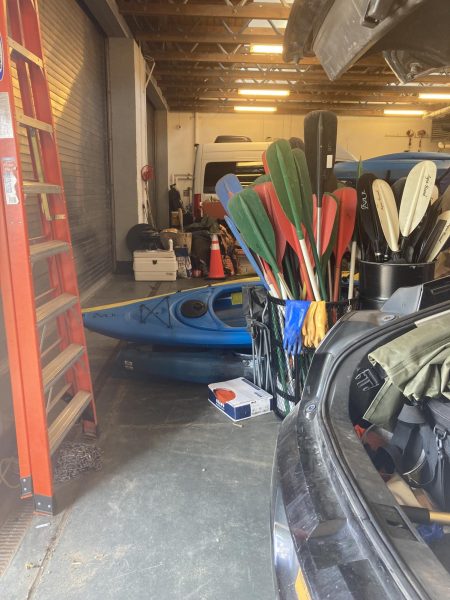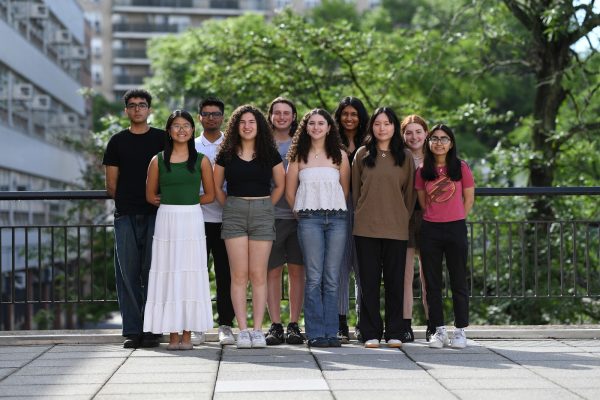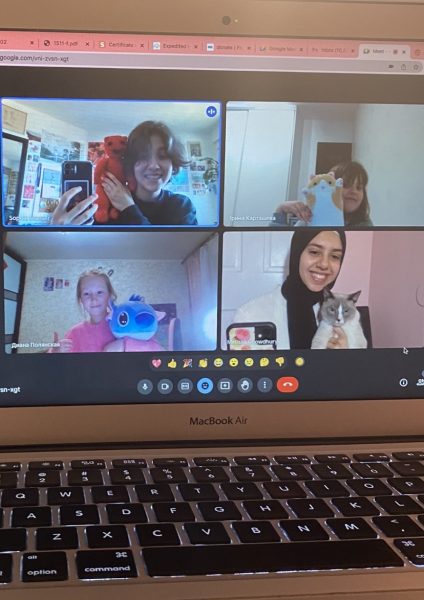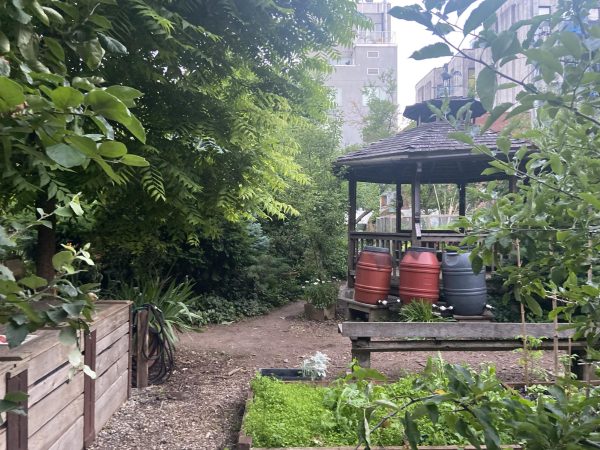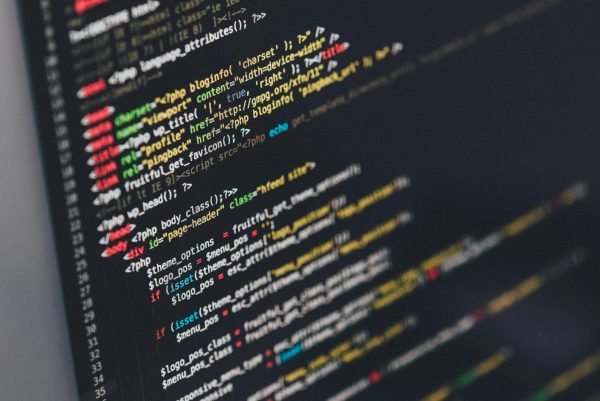Revelations in Research: Bronx Science Recognizes Six Regeneron Science Talent Search Scholars from the Class of ’23
In a triumphant return to pre-Coronavirus Bronx Science, our research program celebrates yet another group of groundbreaking student researchers.
Pictured are Bronx Science’s 6 Regeneron Science Talent Search Scholars for 2023. From Left to Right: Roni Shaham ’23, Xin Qi Liu ’23, Elif Camila Kulahlioglu ’23, Julianne Lee ’23, Vera Pankevich ’23, and Kiele Morgan ’23.
Marie Curie once said, “Nothing in life is to be feared, it is only to be understood.” Bronx Science research students have internalized this message, creating work expected of researchers decades their senior in order to aid our world through innovative scientific discovery.
Many remarkable students exhibited these qualities in the Regeneron Science Talent Search. The oldest and most distinguished science and math competition for high school seniors in the nation, “Regeneron,” as it is typically shortened, awards $1.2 million dollars to 300 of the most notable original research students each year.
These studies have global ramifications for the future of our society in subjects ranging from eco-friendly biofuel to emotional recognition to war itself. Past recipients of this honor have gone on to earn Nobel Prizes, MacArthur Fellowships, and other prestigious awards.
In a pool of nearly two thousand applicants across 627 schools, Bronx Science boasts six semifinalists, or “scholars” as they are known. Selected not only for their research but also their community engagement, leadership skills, and general aptitude, scholars invite new ways of thinking on the national stage.
Let’s take a moment to celebrate this year’s Regeneron scholars: Camila Kulahlioglu ’23, Julianne Lee ’23, Xin Qi Liu ’23, Kiele Morgan ’23, Vera Pankevich ’23, and Roni Shaham ’23.
For eight decades, Bronx Science students have undertaken research projects, making a three year commitment to detailed study that culminates in the submission to Regeneron. Sometimes facing an arduous process, they have persisted, working alongside professors, researchers, and doctors to conduct meaningful research. Despite – or, arguably, because – of their youth, they forge true connections with mentors that can propel them into future careers.
The Bronx Science research process is selective and rigorous, requiring excellent grades for entrance in one’s sophomore year and creating a small classroom environment with student-driven learning. As Mr. Max Chomet, biology research teacher, stated, “Working with a small group over the course of two years (including two summers) means that I both really get to know my students on a personal level and witness their growth as scientists over a much longer timeframe. That allows me to set more personalized goals for each student so that each one is able to do their best.”
To stay committed over three years to intensive study and the rigorous expectations of lab work is no small feat. As Dr. Vladimir Shapovalov, mathematics and computer science teacher, said, “Exceptional diligence and exceptional intelligence are the outstanding qualities of my Regeneron STS 2023 scholars.”
Dr. Scott Savaiano, social science research teacher, added, “It is thrilling to watch them pursue their ideas to fruition. [I] really enjoy being able to teach them specific techniques and methods, then see where they take it.”
These scholars have developed skills, from breeding zebrafish to coding to reading taxonomy articles, and gained an understanding of what it means to work professionally. Now let’s take a deeper look into each of these tremendous journeys:
Camila Kulahlioglu – A New Mathematical Model for Forecasting Upcoming Zoonotic Pandemics and Math-Driven Strategies Utilizing Spatial and Temporal Patterns of Migratory Canadian Geese (Branta canadensis)
Kulahlioglu’s research addressed correlations between different spatial patterns with avian flu cases across states and seasons and ways to predict their movements. Driven by a need to understand fluctuating egg prices in New York, she studied zoonotic illnesses, finding a significant positive relationship between thousands of observed migrating geese across the United States and wild infections.
She hopes to study genomic aspects of these diseases, to go from the spatial and temporal aspects of them, to the relationship between evolution and infectability of diseases.
She remembered, “I would say finally finding the perfect dataset that worked for my project was extremely exciting! What many people may not realize is the CDC [Centers for Disease Control and Prevention] has extremely up-to-date and reliable publicly available data for people to view and see infectious case counts in their local counties for various influenza strains which can be helpful for other projects.”
Julianne Lee – Moving Matter With Sound: Activating Dynamical Systems With Interfering Acoustic Waves
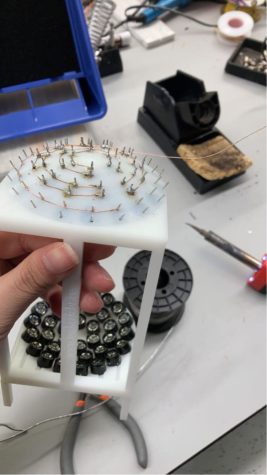
Lee created a new method to move matter with sound, maintaining a constant volume while increasing the pitch of upward-traveling waves at the same pitch on an acoustic levitator. She studied contactless manipulation of millimeter-scale particles, which can be applied to medical and industrial fields – even nano-engineering – to control object movement without human error.
New strategies to contactless object manipulation revolutionize the handling of potentially hazardous objects. It can be used to mix molecules, assemble substances, and even remove harmful materials inactively. With more than 225 hours in the lab, Lee used waves pitch and gravity to translate particles at a controlled speed that could be captured on video, realizing particle velocity oscillates while moving up due to the reflection of sound waves from the top and bottom of the levitator.
She said, “I discovered characteristic velocity oscillations of a levitated particle and simplified physical models to describe the behavior of a trapped particle. My experiment demonstrates the potential of acoustic manipulation for contactless object transport without the need for sophisticated technology, and its principles can be extended to two or even three dimensions.”
Xin Qi Liu – New Computational Methodologies To Identify Classes of Near-Infrared Fluorescence Dye for Early Diagnosis of Alzheimer’s Diseases
Liu studied Alzheimer’s Disease, the primary cause of dementia and neurological degeneration, creating a method to “design novel [and fluorescent] dyes for early diagnosis of Alzheimer’s through pathological changes in the retina” with the hope of preventing or slowing the progression of the disease. He spent fifteen hours a week in the lab to develop these tests. He also verified the accuracy of predicting the behavior of dyes using the density functional theory and the time-dependent density functional theory.
Alzheimer’s currently has no cure and is one of the most difficult diseases to treat, so Liu prioritized developing early discovery methods that give time for interventions that can enhance quality of life for patients. These can also potentially be applied to other types of preventative disease research.
He explained, “Computational analysis like mine allows scientists to understand the chemical properties of different compounds, which enables them to recognize specific structures that are needed to progress in their goals. The use of computational chemistry in medical research can speed up the discovery of new drugs and therapies, and reduce the cost and time required for experimentation.”
Kiele Morgan – The Effect of NMDA Receptor Blockade on Neurogenesis and Neural Crest Development
Morgan addressed the gap in the understanding of neurodevelopmental disorders like autism through study of the NMDA receptor. This receptor interacts with proteins in the cell, controls the movement of calcium ions, and works in brain signaling, so when it malfunctions, it can lead to neurodevelopmental diseases (NDDs).
She spent 300 hours in the lab using zebrafish, in which the transmission of Ca+2 ions into the zebrafish cell through the NMDA receptor was blocked, restricting the receptor to proteins inside the cell. This yielded supernumerary neurons, cartilage malformation, and hyperactivity of the treated zebrafish characteristic of people with NDDs, like autism.
Essentially, she stimulated NDDs in zebrafish, revealing a possible cause for these common traits – a loss of calcium transmission – and developing further understandings of NDDs.
As Morgan put it, “By unpacking the mechanisms behind the development of these disorders, it becomes possible to medically diagnose and treat them. Evaluations are more likely to diagnose wealthy and white children than Black, Latinx, Asian or low-income children. These discrepancies could potentially be mitigated through a standard, uniform medical test for autism and other disorders. Hopefully through a better understanding of the etiology of these disorders, we will be able to develop more effective treatments that can improve a patient’s quality of life.”
Vera Pankevich – A New Montane Species of Protium From Ecuador and Peru
Pankevich studied systematic botany at the New York Botanical Garden, addressing questions of biodiversity and species differentiation. She described and discovered aspects of a new tree species found in South America, a task usually designated only to those with years of training. Spending roughly 150 hours in the lab, she learned to map coordinates, classify leaf venation, and even read taxonomy articles.
She explained, “It is important to classify novel species, especially in logged forests, because selective logging attempts to preserve biodiversity via maintaining species proportions relative to how they were before logging, and if the initial proportion data is inaccurate because the species were incorrectly classified, it can have devastating consequences on the ecosystems.”
This entails that, as species are discovered, their details must be chronicled and described in order to preserve the ecosystems and protect species.
Roni Shaham – #HermanWho? Using Linguistic Analysis To Empirically Measure the Fifth Filter of the Propaganda Model in 2022
Shaham studied propaganda, uncovering structural biases in American media based on the use of political influencers to propel narratives. He worked to validate Herman’s Propaganda Model – an analysis of raw news material and the filters it undergoes before publication in order to benefit established power — in relation to Russia’s invasion of Ukraine and the U.S. withdrawal from Afghanistan.
He reflected, “I looked for ways in which the U.S. deceived and influenced Americans at home. Through months of hard work, I turned a childhood dream – to one day create knowledge instead of consum[ing] it – into reality.”
He discovered that political parties tended to refer to international “enemies” in a greater percentage of tweets than the rival political party, a finding surprising in the polarized post-January 6th political setting; in other words, despite heightening tensions within the U.S., there is still greater unity across the American political landscape – and with dissenting politicians – than with problematic members of foreign nations.
He continued, “As the world continues from crisis to crisis, defining the ideological filter of the PM [Propaganda Model] is essential to understanding the propaganda spread by U.S. elite interests. In order to take the reins of the twenty-first century, we must be able to expose propaganda and the ideological assumptions it rests upon, critique that ideology, and forge a path away from those powerful interests.”
Looking Towards the Future
Each Regeneron project works to promote change across many thriving fields of study, be it radically changing human quality of life, adding insight to our understanding of nature (animals and plants), or psychoanalyzing human behavior and bias. Age, to these Regeneron scholars, is not a deterrent but a motivation, and they navigate the complex world of research with ingenuity and drive.
Research may not be simple, but it builds tremendous character and a sense of autonomy. As Kiele Morgan stated, “During wet lab work, I had to be super focused and independent which is something I will definitely take with me as a student and a member of society. I feel like I am truly a part of the scientific community.”
Xin Qi Liu remarked, “Research has taught me the importance of contributing to society through scientific research. It has opened my eyes to the various issues society is facing and has provided me with inspiration to tackle these challenges and play a leading role in finding solutions. I have been able to learn new skills, gain knowledge, and contribute to the advancement of science and technology. It has also given me a sense of purpose and the motivation to continue pursuing research in the future.”
Beyond the scientific scope, these experiences only teach valuable lessons about our society. Roni Shaham contributed, “This research helped me become much more open-minded in my assumptions of the world and inspired me to be more optimistic about what is within my power as an individual person. In a more general sense, talking to professors and exciting people about my work empowered me individually and showed me that I could affect the world.”
All six scholars intend to continue their pursuit of science after high school, and one can only imagine what they will do next. They should all feel tremendously proud of how they are reshaping our world.
Xin Qi Liu remarked, “Research has taught me the importance of contributing to society through scientific research. It has opened my eyes to the various issues society is facing and has provided me with inspiration to tackle these challenges and play a leading role in finding solutions. I have been able to learn new skills, gain knowledge, and contribute to the advancement of science and technology. It has also given me a sense of purpose and the motivation to continue pursuing research in the future.”
Hallel Abrams Gerber is an Editor-in-Chief for ‘The Science Survey,’ using her writing to represent a myriad of social issues and innovations, bolster...

